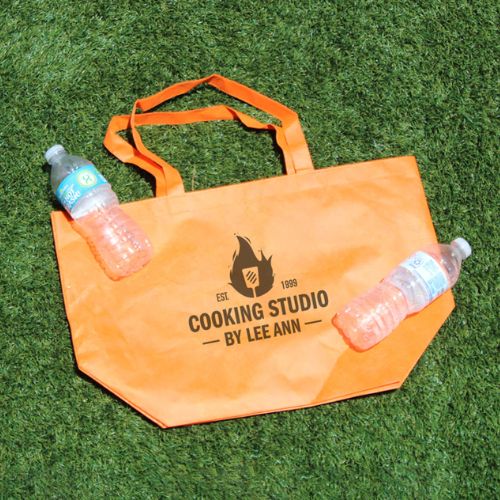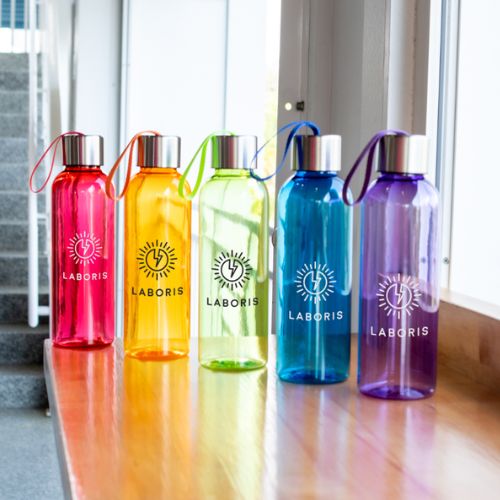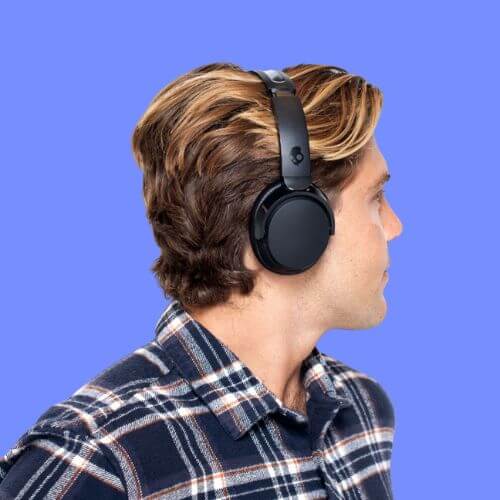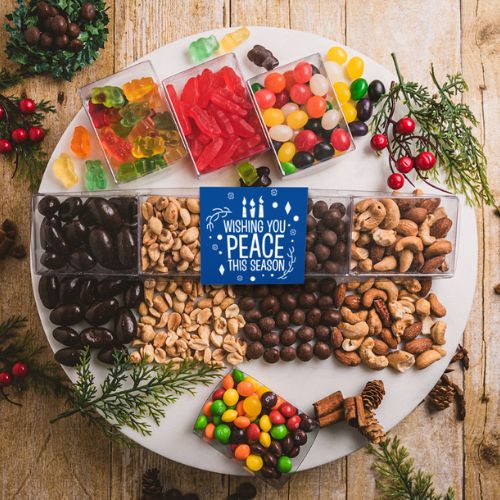Relief printing
Relief printing, which is also known as thermal relief printing or thermography, is a print finishing technique that is used primarily for the high-quality printing of business cards, invitation cards, letterhead, menu cards, greeting cards or packaging. Relief printing is considered a very high-end printing process method. With the help of the special printing process of relief printing, the advertising message or the company logo will appear in a specific 3D effect on an advertising product. The optical design gives the advertising item a high-quality finish and a stylish feel. The high quality of the relief print is ideal for meeting high demands with the help of a printing process.
How does relief printing work?
With the help of relief printing, which is considered to be an extension of the flat printing process, an impressive effect can be achieved on an advertising product. With relief printing, conventional offset printing is enhanced with a special resin powder. After printing, which takes place on conventional offset printing machines, thermoplastic granulate resin powder is applied to the ink layers of the print that have not yet dried. This will keep the resin powder on the sticky print surfaces and remove the remaining powder. The granulated mixture is then melted under heat using a special infrared heater, which causes the resin powder to swell, depending on the color of the powder, and transforms into a transparent or colored hard coating.
This printing process creates a tactile and clearly visible raised surface on the printed advertising medium, the 3D effect. This increase is very similar to the steel engraving process. However, unlike steel engraving, relief printing does not mark or emboss the back of the promotional item. The reverse side remains smooth during the relief printing process. A two-sided relief printing is also possible. Flat areas in classic offset printing and raised company logos can be highlighted with relief printing. The thickness of the relief on the specific product can be individually determined in advance by the grain size of the resin powder. In addition, there is also the possibility of a laser-resistant print version of the relief print, so that the relief print is not softened by heat in the printer.
The advantages of relief printing
- In contrast to the steel engraving process, relief printing is a cost-effective alternative as little manual work or expensive tools are required for the manufacturing process.
- Relief printing is also particularly good for small print runs and surfaces, such as business cards, as no special tools are required.
- The process counts as a noble variant of offset printing.
- Relief printing means that no embossing or expensive engraving is necessary. With the help of relief printing, a high promotional impact can be achieved with relatively low costs and a fast printing process.
- By increasing the relief, a high-quality and tactile print motif is created.
- The special synthetic resin powder creates lines, lettering and lettering elements with a shiny, reflective surface in your specific design or logo.
- Relief printing enables double-sided and multicolored high-quality printing.
The disadvantages of relief printing
- Relief printing is not suitable for all materials. Only slightly absorbent materials with a basis weight of at least 90 g/sqm are suitable.
- Relief printing only allows printing with full tones. A 4c color print is not possible.
- It is only possible to print on hard surfaces, such as paper or leather. Printing on plastic is not suitable, as the material will melt due to the heat.
- Relief printing cannot be printed on every format of a promotional product.
- Especially with rough paper, the pigmentation and the look of the 3D paint is not as sharp as that of a steel print. However, this is difficult to see with the naked eye; when viewed normally, the relief print appears to be of very high quality and classy.
For what types of promotional products are relief printing particularly well suited?
Relief printing is a particularly popular printing process technique to give a promo item a special and personal touch. The process is primarily used for printing business cards. Furthermore, this technique is often used to refine high-quality business mail and greeting cards. Thanks to the high-quality visual appearance, relief printing is also suitable for finishing invitation cards, letterhead, covers for brochures and flyers, menu cards, greeting cards, high-quality product tags and packaging. With relief printing, promotional designs and company logos on business cards not only look professionally printed, they appear particularly high-quality thanks to the colors and the heightening of the fonts. With this type of branding, the brand design and logos are conveyed particularly efficiently in contact with the customer. For this reason, business stationery is often designed using relief printing and refined in this way. The print medium can be felt by the customer when they touch it with their fingers and thus differs significantly from other classic finishing techniques.
What are the costs of relief printing?
Relief printing can be used to achieve high-quality results on a unique promotional item. However, the high-quality processing makes this finishing technique somewhat more expensive than other printing processes. When it comes to pricing, of course, various technical features play a role, from which the price for a relief print results. With relief printing, the price is calculated from the number of copies (print run), number of colors (single or multi-colored) and the print (single-sided or double-sided), the format and the material specifications. The costs for relief printing increase when more printing ink is used and the larger the motif or branding message to be printed. The printing process is suitable for achieving quick printing results in case you have a deadline. This is how the logos display lettering and texts in a tactile and 3D manner. Particularly detailed motifs, logos and designs can be implemented particularly well with relief printing, because relief printing enables the print to be carried out even more precisely than is possible with embossing, for example.
Our conclusion
Relief printing was developed as a cost-effective finishing technique for expensive steel intaglio embossing. With the help of relief printing, smooth paper can be printed and finished particularly quickly and cost-effective. The relief, which has a three-dimensional (3D) look, creates high-quality lettering and lines on the specific promotional item. This offers customers and business partners a memorable experience when they come into contact with the advertising medium. Relief printing is therefore an ideal way of having a company’s business cards, packaging and letterhead printed. Promotional product printing in small runs can be optimally implemented in this way. Before printing, the possibilities of the different printing variants for an advertising medium should be considered. Before printing, you should consider that the promotional items can be produced as efficiently as possible in an online shop or a print shop. The range of different processes is very large, from letterpress to blind embossing and hot foil embossing. Professional advice in the respective shop or printer is recommended to obtain the necessary information on relief printing, letterpress, blind embossing, screen printing or other finishing techniques.






